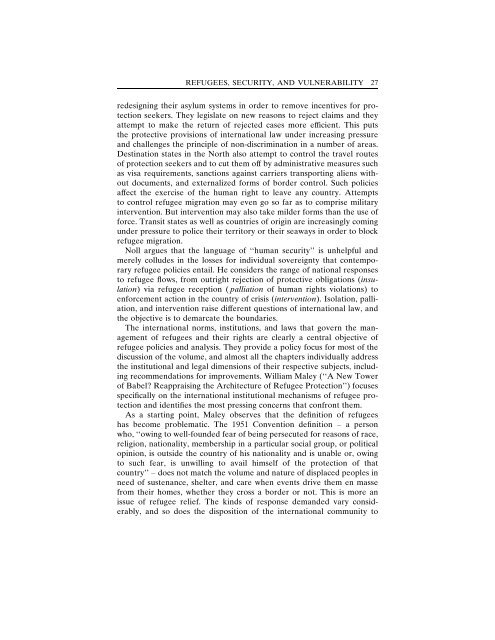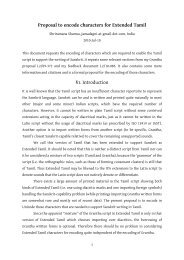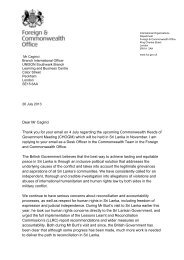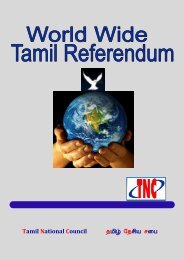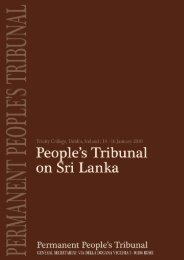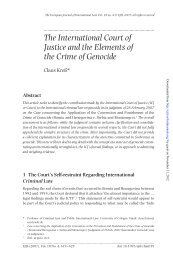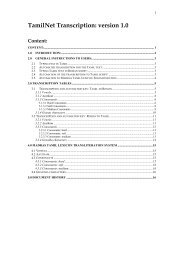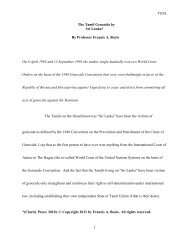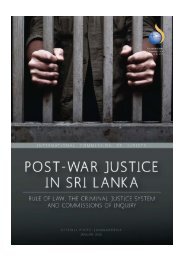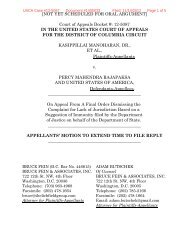Refugees and forced displacement - United Nations University
Refugees and forced displacement - United Nations University
Refugees and forced displacement - United Nations University
Create successful ePaper yourself
Turn your PDF publications into a flip-book with our unique Google optimized e-Paper software.
REFUGEES, SECURITY, AND VULNERABILITY 27redesigning their asylum systems in order to remove incentives for protectionseekers. They legislate on new reasons to reject claims <strong>and</strong> theyattempt to make the return of rejected cases more efficient. This putsthe protective provisions of international law under increasing pressure<strong>and</strong> challenges the principle of non-discrimination in a number of areas.DestinationstatesintheNorthalsoattempttocontrolthetravelroutesof protection seekers <strong>and</strong> to cut them off by administrative measures suchas visa requirements, sanctions against carriers transporting aliens withoutdocuments, <strong>and</strong> externalized forms of border control. Such policiesaffect the exercise of the human right to leave any country. Attemptsto control refugee migration may even go so far as to comprise militaryintervention. But intervention may also take milder forms than the use offorce. Transit states as well as countries of origin are increasingly comingunder pressure to police their territory or their seaways in order to blockrefugee migration.Noll argues that the language of ‘‘human security’’ is unhelpful <strong>and</strong>merely colludes in the losses for individual sovereignty that contemporaryrefugee policies entail. He considers the range of national responsesto refugee flows, from outright rejection of protective obligations (insulation)via refugee reception ( palliation of human rights violations) toenforcement action in the country of crisis (intervention). Isolation, palliation,<strong>and</strong> intervention raise different questions of international law, <strong>and</strong>the objective is to demarcate the boundaries.The international norms, institutions, <strong>and</strong> laws that govern the managementof refugees <strong>and</strong> their rights are clearly a central objective ofrefugee policies <strong>and</strong> analysis. They provide a policy focus for most of thediscussion of the volume, <strong>and</strong> almost all the chapters individually addressthe institutional <strong>and</strong> legal dimensions of their respective subjects, includingrecommendations for improvements. William Maley (‘‘A New Towerof Babel? Reappraising the Architecture of Refugee Protection’’) focusesspecifically on the international institutional mechanisms of refugee protection<strong>and</strong> identifies the most pressing concerns that confront them.As a starting point, Maley observes that the definition of refugeeshas become problematic. The 1951 Convention definition – a personwho, ‘‘owing to well-founded fear of being persecuted for reasons of race,religion, nationality, membership in a particular social group, or politicalopinion, is outside the country of his nationality <strong>and</strong> is unable or, owingto such fear, is unwilling to avail himself of the protection of thatcountry’’ – does not match the volume <strong>and</strong> nature of displaced peoples inneed of sustenance, shelter, <strong>and</strong> care when events drive them en massefrom their homes, whether they cross a border or not. This is more anissue of refugee relief. The kinds of response dem<strong>and</strong>ed vary considerably,<strong>and</strong> so does the disposition of the international community to


